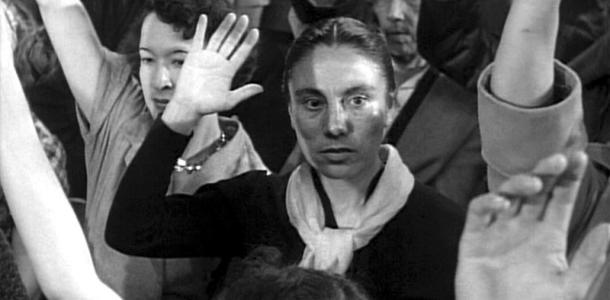THE SALT OF THE EARTH
Sony Pictures Classics
Reviewed for Shockya by Harvey Karten. Data-based on Rotten Tomatoes.
Grade: B
Director: Wim Wenders, Juliano Ribeiro Salgado
Screenwriter: Juliano Ribeiro Salgado, Wim Wenders, David Rosier
Cast: Sebastião Salgado, Lelia Wanick Salgado, Juliano Ribeiro Salgado, Sebastiao Ribeiro Salgado, Hugo Barbier, Regis Muller, Jacques Barthelemy. Narrated by Wim Wenders, Juliano Ribeiro Salgado
Screened at: Sony, NYC, 1/12/15
Opens: March 27, 2015
As with any field, photography has levels of professionalism. At the bottom of the heap are the folks who take selfies with their cheap, digital cameras. I call them the narcissists. Several notches higher are special events photographers who capture the happy brides and grooms at weddings and bar mitvah boys after synagogue services. They are the bourgeois. Then close to the highest level are photographers who go out in nature and take pictures of zebras in the Serengeti, tortoises at Galapagos. They are the travelers-impressing-the-folks-stuck-back-home. Within that level, of course, are various degrees of skill, some snapping shots that suitable for those coffee table books that nobody reads but which save other documents from the wind blowing through the windows. Then you reach the summit: those photographers who live with the people or animals or flora and fauna that they will capture on film. That’s what “The Salt of the Earth” is about, focusing on Sebastião Salgado, a decent man known for the past 40 years by a fellow photographer Wim Wenders, who co-directs this documentary about one of the world’s most important picture takers.
As Mr. Wenders narrates and Sebastião’s son and co-director Juliano Ribeiro Salgado runs his own lenses, we see the subject of the movie showing up in some cases through a kind of mirror that allows his head to appear and talk in the midst of the scenes being shot. Salgado, born in rural Brazil, left the country in 1969 during the beginning of the military dictatorship living throughout thirty other nations until his return to Brazil over a decade later. But he did not lie on hammocks during that time. Instead, this man, whose father wanted him to be a lawyer but who trained as an economist, decided that he was not made to sit behind a desk but chose to live as an adventurer together with his Canon camera fitted with telephoto lenses. Nor was he content to shoot butterflies and flowers, rather concentrating on what a miserable species we human beings can be.
He went to war zones in Rwanda and Ethiopia, observing people suffering from the fighting, and from famine and economic dislocation, homeless folks living in tents if they were lucky, dying of malnutrition and outright starvation if not. Hutus killed Tutsis and Tutsis got a measure of revenge: Salgado’s photos graphically illustrate a portion of Robert Louis Stevenson’s essay, “Pulvis et Umbra,” which includes this: “What a monstrous spectre is this man, the disease of the agglutinated dust, lifting alternate feet or lying drugged with slumber; killing, feeding, growing, bringing forth small copies of himself; grown upon with hair like grass, fitted with eyes that move and glitter in his face; a thing to set children screaming.” Salgado’s photos, incorporated into doorstopper-sized books, include “Workers: Archaeology of the Industrial Age,” “Migrations,” and “Sahel.” In fact the film opens with a Hieronymous Bosch style picture of Brazilian gold miners which, blown up to the size of the movie screen, is a monumental picture, perhaps the most striking piece of camerawork that Salgado had ever done.
In a long visit with an Amazonian tribe still living in the Paleolithic era, Salgado refuses to hand over his knife, as this would corrupt the “purity” of the people, though we wonder how this naked folks who are the world’s last remnant of a garden of Eden, were able to carve arrows for their bows.
Yet, to quote another section of Stevenson’s essay, “And we look and behold him instead filled with imperfect virtues: infinitely childish, often admirably valiant, often touchingly kind; sitting down, amidst his momentary life, to debate of right and wrong and the attributes of the deity; rising up to do battle for an egg or die for an idea; singling out his friends and his mate with cordial affection; bringing forth in pain, rearing with long-suffering solicitude, his young.” Ultimately, despite hundreds of thousands of deaths caused not only by drought and dried out soil but by our fellow creatures, he finds grounds for optimism, as Salgado photographs the family return to a range in Aimorés, Brazil, a deforested wasteland which finds good people replanting two million trees, structure which will reach full maturity well behind its planters’ lifetimes but which already show rewards. Thus Salgado’s last book, “Genesis,” filled with nature shots restoring the man’s faith in humankind.
I would have liked to hear from of the technical details, such as the specific kinds of cameras and lenses he uses, where he gets the photos developed, why he chose black-and-white only. Also, I would like to have found out exactly what makes a great photographer aside from a willingness to live with the subjects. For example, when he shoots a polar bear in the Arctic Circle, rolling on the ground just like the big animal, he notes that there is no background and that therefore the picture of the bear would not be a good one. Wouldn’t any photographer know to frame pictures with backgrounds?
Rated PG-13. 109 minutes. © Harvey Karten, Member, New York Film Critics Online
Story – B
Acting – B
Technical – A-
Overall – B

